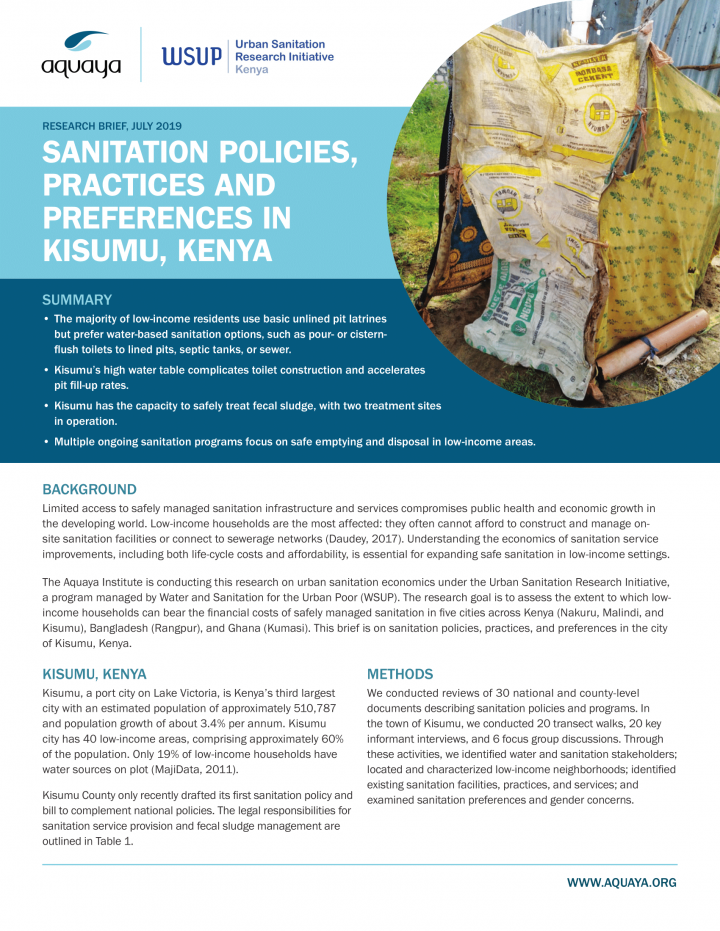
Published in: 2019
Pages: 3
Publisher:
The Aquaya Institute
Author:
The Aquaya Institute
Uploaded by:
Alicea Easthope-Frazer
Partner profile:
Aquaya Institute
2710 Views
130 Downloads
Location of library entry
The Aquaya Institute is conducting this research on urban sanitation economics under the Urban Sanitation Research Initiative. This brief is on sanitation policies, practices, and preferences in the city of Kisumu, Kenya.
SUMMARY
• The majority of low-income residents use basic unlined pit latrines but prefer water-based sanitation options, such as pour- or cistern-flush toilets to lined pits, septic tanks, or sewer.
• Kisumu’s high water table complicates toilet construction and accelerates pit fill-up rates.
• Kisumu has the capacity to safely treat fecal sludge, with two treatment sites in operation.
• Multiple ongoing sanitation programs focus on safe emptying and disposal in low-income areas.
Bibliographic information
The Aquaya Institute (2019). Sanitation Policies, Practices, and Preferences in Kisumu, Kenya. The Aquaya Institute
Filter tags
English Factsheets and policy briefs Sub-Saharan Africa














